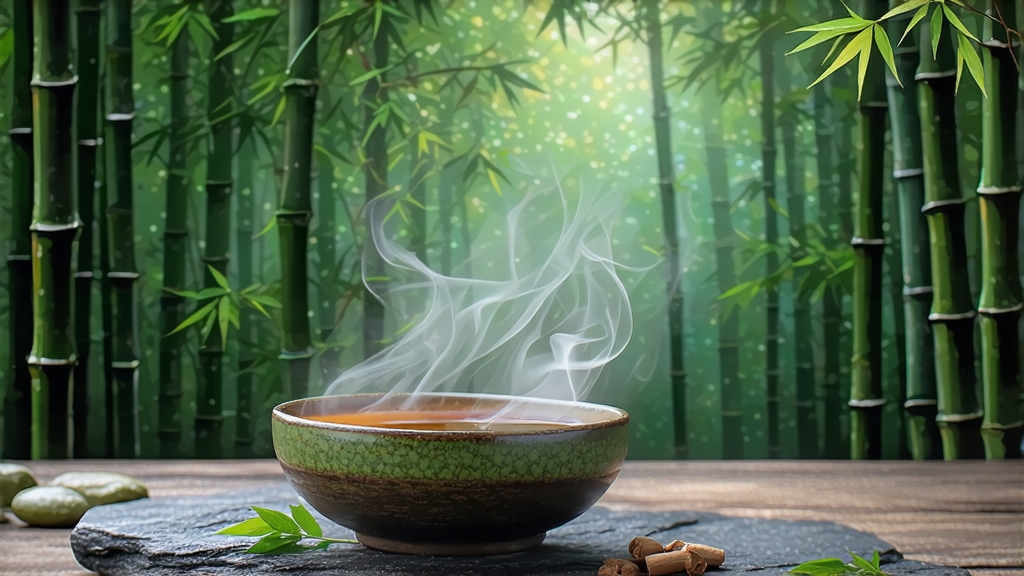
Tucked into the cloud-laced ridges of Sichuan’s Mengding Mountain, Meng Ding Huang Ya—literally “Meng Peak Yellow Bud”—has been courted by poets, monks, and emperors for twelve centuries. Unlike the better-known green teas that surround it on the same slopes, this yellow tea survives only in a handful of micro-gardens above 800 m, where perennial mist slows photosynthesis and concentrates amino acids in the tender spring buds. The result is a liquor the color of late-afternoon sunlight and a flavor that seems to suspend the mountain’s cool humidity in a single sip.
Historical whispers place the tea’s tribute status as early as the Tang dynasty (618-907 CE), when a monk from the Woye Temple presented a small jar of “sweet dew yellow sprouts” to Emperor Xuanzong. By the Song era, annual caravans carried sealed bamboo tubes of the buds down the Min River to Chengdu, then along the post-roads to Chang’an, each tube wrapped in yellow silk—an imperial color—hence the enduring association with royalty. After the fall of the Qing, production lapsed for nearly a century; the secret of its slow “sealed yellowing” survived only in the memory of three hereditary tea masters. When Chinese tea researchers reopened Mengding in 1959, they found one 78-year-old craftsman who could still recall the exact depth of the bamboo pit and the number of wet cotton covers needed to coax the leaves from green to primrose without surrendering their freshness.
Botanically, Meng Ding Huang Ya is a single-bud pluck taken from the local “Mengding #9” cultivar, a small-leaf landrace that sprouts two weeks later than the adjacent green-tea bushes. Picking occurs only between the Qingming festival and Grain Rain, when each bud weighs, on average, 0.12 g and still shelters the silvery pubescence that will later refract light like powdered gold. A seasoned picker can finish barely one kilogram of fresh buds in a dawn shift; 50,000 buds—an entire day’s labor for twenty pickers—yield just 500 g of finished tea.
The craft sequence follows five classical steps, each calibrated to the mountain’s capricious weather. Sha Qing (kill-green) is conducted at 140 °C on a cast-iron wok brushed with spring water; the toss must last exactly 4.5 minutes so the leaf temperature reaches 85 °C without scorching the down. Immediately afterward the buds are wrapped in thin cotton squares and slid into a shallow pit lined with fresh bamboo leaves; the pit is covered with hemp sacks and left for 60–70 hours in a dark, 28 °C chamber. This is the “sealed yellowing,” the enzymatic heartbeat that distinguishes yellow tea from green: chlorophyll gently oxidizes while polyphenols partially polymerize, lending the leaf a pale champagne hue and softening astringency into custard-like sweetness. The third step, Mao Huo (primary drying), sees the buds returned to the wok at 80 °C for ten minutes to fix the color; they are then rolled for eight minutes under a pressure of just 0.6 kg/cm² to preserve bud integrity. A second, slower yellowing of 40 hours follows, after which the tea is baked over charcoal embers covered with a bamboo screen, the temperature never exceeding 60 °C. Finally, the sifter removes any broken tips; only whole, downy buds shaped like sparrow’s tongues are deemed worthy of the name Meng Ding Huang Ya.
To brew the tea abroad, use a tall, thin-walled glass or a 120 ml gaiwan so the vertical dance of buds can be observed. Begin by rinsing the vessel with 85 °C water; then add 3 g of dry buds—roughly two level teaspoons. The first infusion, 30 seconds at 80 °C, releases a pale apricot liquor and an aroma of honey-dripped orchid. The buds stand upright, tips pointing to the surface like miniature periscopes. The second infusion, 45 seconds, deepens the color to old gold and introduces a note of steamed pumpkin. By the fourth infusion the leaves relax horizontally, surrendering a silky broth reminiscent of custard apple and wet slate. Because the leaf is so tender, six infusions are possible before the sweetness fades into quiet vegetality.
Professional cupping follows a slightly stricter protocol. Five